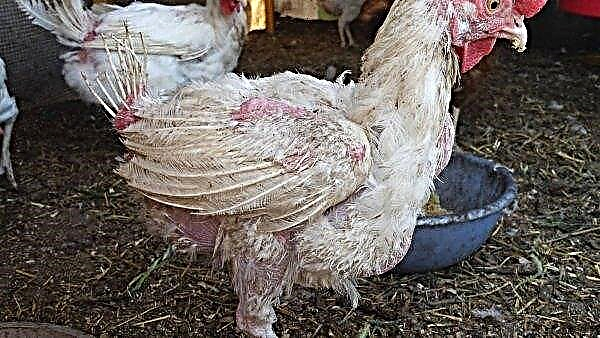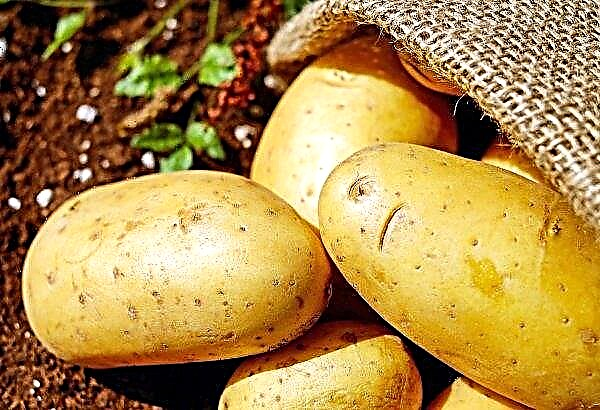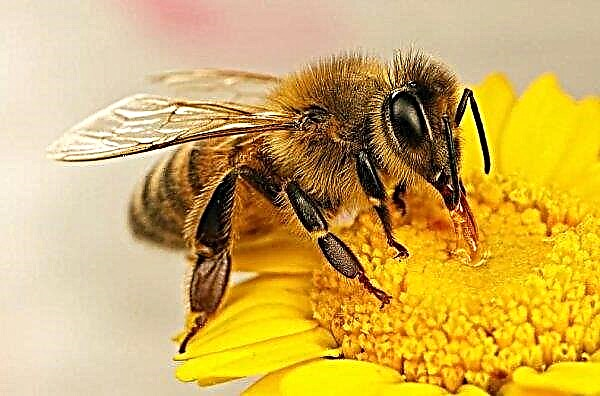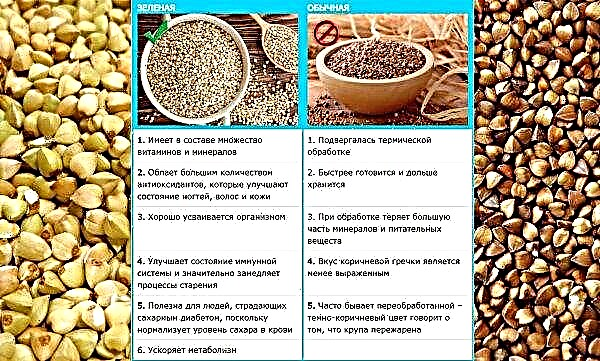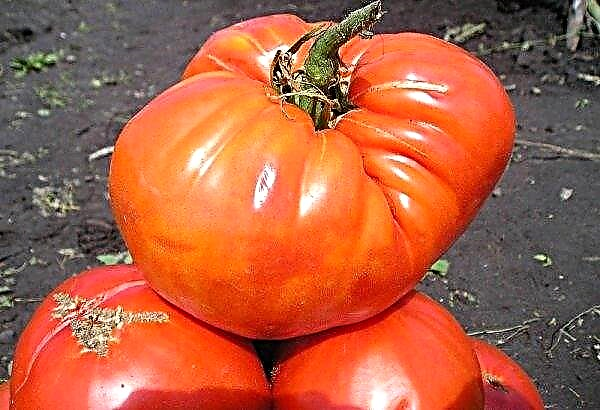The term "greenhouse" means the presence of heat in such a structure at any time of the year. When outside the greenhouse the air temperature drops below -2 ° C, you can not do without heaters. Read about one of them - the gas air infrared heater.
Types of gas heaters
According to the degree of attachment to specific places in the greenhouse, gas heating devices are divided into stationary and mobile (portable).
Did you know? In addition to direct use, infrared emitters are able to effectively fight harmful microorganisms, which are very numerous in greenhouses.
Stationary
Fixed gas devices installed on a permanent and specific place in a greenhouse can be mounted:
- on the ceiling;
- on the wall;
- at the baseboard;
- in limbo.

Figurative
Mobile types of gas heaters are able to change the location inside the greenhouse, depending on current needs. To do this, they are equipped with wheels or special legs.
Greenhouse heating with gas heaters: pros and cons
- During the operation of gas infrared units, many of their positive qualities were recorded:
- they predominantly heat the soil, not the air;
- do not create strong forced air flows, which complicates the movement of dust and pathogens;
- low noise operation;
- infrared radiation propagates at an angle of 120 °, which allows you to heat a large area;
- quick warming up of the greenhouse and long heat preservation;
- economical fuel consumption;
- durability of continuous work;
- compactness;
- ease of installation;
- universality of application;
- lack of moving parts in the design, which facilitates the maintenance of units.
- The disadvantages include:
- high cost of heaters;
- the opportunity to purchase a fake, characterized by the fragility of operation;
- the need for a careful calculation of the number of necessary devices for a particular greenhouse.
Did you know? Why do IR heaters heat surfaces without heating the air? In the infrared wavelength range there are peculiar “windows” in which these waves are absorbed minimally. In one of these “windows” there is air, which is almost transparent to infrared waves.
Classification
Infrared heating devices are distinguished by sources of released energy, types of heating elements, installation methods of installation and some other characteristics.
Source of energy
Today there are 3 sources of heat emitted by heaters, according to which the devices are divided into:
- electric;
- gas;
- diesel.

Type of heating element
Heating elements in gas infrared heaters are:
- metal in the form of grids heated to high temperatures;
- ceramic tiles in the form of great strength and the ability to quickly heat up to high temperature and cool quickly;
- metal in the form of tubes giving a lower temperature.
By the type of heating elements, gas infrared heaters are divided into:
- bright which, causing a visible glow, heat metal meshes or ceramic tiles to temperatures above + 600 ° C;

- darkheating metal tubes to temperatures below + 600 ° C.

The form
Light heaters, as a rule, have a round or rectangular shape and are not equipped with a smoke exhaust. The dark versions of these devices have an elongated shape and are equipped with a smoke exhaust that drives the combustion products through a tubular heating element.
Mounting method
As mentioned above, depending on the installation method inside the greenhouse, heating devices are divided into mobile and stationary. Since gas heaters are tied to a gas supply source, they are usually made stationary and mounted on the ceiling, on the walls, near the baseboard or suspended from the ceiling.
Usually skirting heaters are mounted under the windows, which allows them not only to perform the functions of a heating device in the greenhouse, but also to level the flow of cold air into the room from the outside. Suspension devices are fixed under the ceiling by means of special brackets and anchor bolts. Together with ceiling devices, they are most preferable for the full heating of the soil in the greenhouse. 
Heating temperature
Gas heaters are heated to temperatures from + 400 ° C to above + 1000 ° C. The required temperature directly depends on the area and height of the greenhouse. At the same time, the heat flux of infrared sources is mainly (over 60%), unlike a convector, formed from electromagnetic radiation produced by heating elements heated by burning gas.
Emission range
Wien's law explains the dependence of the heating temperature of the irradiated surface on the wavelength of electromagnetic radiation. The higher the temperature, the shorter the electromagnetic waves. In this regard, the radiation range is divided into:
- long wavelength;
- medium wave;
- shortwave.

Thus, short-wave radiation is used for large production greenhouses.
Important! The advantage of gas heaters is due to the lower price of gas compared to electricity. A 50-liter gas cylinder can provide heaters with fuel throughout the winter months.
How to choose infrared heaters for greenhouses?
The choice of the optimal heating device for a particular greenhouse is due to many factors:
- the area of the room, which, with a value of more than 20 m², involves the use of a stationary option, and with a smaller area - a mobile one;
- unit power oriented to the volume of the room;
- the efficiency of the device, determining its efficiency;
- cost of energy sources;
- type of radiation;
- operational safety;
- easy installation.

Features of installation and placement
During the installation of heating devices in the greenhouse, in addition to following the attached instructions, The following factors must be considered:
- The infrared heater should be installed at least 1 m from the ground.
- Since the distance from the device to the plant should be the same, during installation it is necessary to take into account the possibility of changing the position of the device as the plant grows.
- It is recommended that infrared heating units be placed closer to the walls and ceiling around the perimeter of the room.
- The distance between adjacent devices of low power should be at least 1.5 m.
- In large greenhouses, the best option is to arrange the devices in a checkerboard pattern.

Operation tips
Experience gained by gardeners and gardeners during the operation of infrared heaters in greenhouses, allows you to draw certain conclusions on their use:
- with proper operation of such a source of heating for greenhouse plantings, seedling germination is increased by 40%;
- with the help of infrared rays, it is possible to maintain optimal humidity and a favorable microclimate in the greenhouse at elevated temperatures, since infrared radiation does not dry the air;
- using the correct location of IR equipment, it becomes possible to warm the soil to a depth of 7 cm, which cannot be achieved with other types of heaters;
- using these devices, it is possible to warm the soil to + 28 ° C so that the air temperature in the greenhouse does not exceed + 21 ° C.
Important! For greenhouses of small area, it is advisable to use long-wave gas infrared equipment.
An effective and gentle microclimate in the greenhouse infrared gas heater is distinguished by the availability of fuel used and the ease of maintenance. When designing a heating system for greenhouses, more and more gardeners give preference to this particular device.



